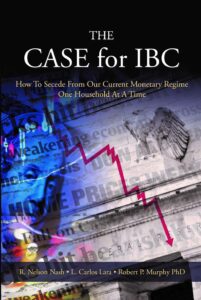Understanding the Laffer Curve
In my latest FEE article, I clarify the legacy of Reaganomics and I correct a popular misconception about the Laffer Curve. An excerpt:
Critics like to deride the Laffer curve as “voodoo economics” by pointing to counterexamples, say of tax rate reductions that didn’t increase total revenue, or by pointing to tax rate hikes that brought in more revenue. But these possibilities were contained in the original Laffer curve itself. Specifically, if the tax rate starts below the inflection point, then a tax rate reduction will shrink receipts, while a tax rate hike will increase receipts. Laffer never drew his curve with the inflection point hovering above 1 percent, so how in the world did critics get the idea that Laffer thought “tax cuts always pay for themselves”? Did the critics think Laffer couldn’t read his own curve?
Now what Laffer did stress — and I can speak with authority here, because at his firm I had occasion to read plenty of his old papers going back to the early 1980s — is that a tax rate reduction would have a smaller impact on tax receipts than a “static” scoring analysis would indicate. So, for example, if California cut its marginal personal income tax rates across the board by one percentage point, the drop in total tax receipts would be smaller than one percent. The increase in economic activity would not only increase the base of the personal income tax, but it would also increase receipts from sales taxes, property taxes, and so on. Depending on how onerous the initial tax rate was, it was even theoretically possible that the drop in revenue would be negative — meaning that total tax receipts would actually increase — but that was never a blanket prediction of the Laffer approach.







Nice piece. I wrote on this in a piece in Contemporary Policy Issues in the late 1980s.
I’m pretty sure you’re using the term “inflection point” wrong.
David,
Yes, I know that an inflection point in geometry doesn’t mean “turning point.” But for whatever reason, I thought the average reader would know exactly what I was trying to say with “inflection point” when there was no accompanying graph.
Bob, perhaps I’m not an average reader but knowing exactly what you were talking about I was nevertheless baffled that you referred to the critical point as the inflection point.
So a mathematically savvy reader who is notsure what the Laffer Curve looks like, could be confused.
Also I think you mean differential calculus, not geometry.
Yeah, IIRC, the inflection points are where the deceleration on the curve ends and acceleration begins and visa versa.
http://en.wikipedia.org/wiki/File:Cubic_graph_special_points.svg
Hello – this comment is not at all related to this post, so if that’s inappropriate, feel free to delete.
I was recently browsing the archives of the journal of Austrian economics, and came across a response (written by Julius Jablecki and Matt Machaj) to your article re: Cantor’s diagonal argument and socialist planning. I know that was all a long time ago, but I was wondering what your thoughts were on their argument that the Central Planning Board would not have to make a price list of all potential products for the same reason that firms in capitalist production don’t have to make such lists (because they both just determine costs from production).
There’s no compulsion to respond, just a curious reader.
A lot of the time, these costs were understated, causing shortages or balance of payments issues. Even so, no one doubts the U.S.S.R. managed to make a crazy amount of progress until the mid-1970s.
Sometimes costs were overstated; indeed, the urban skill premium was often negative as skilled labor was considered easier to do for those who know how to do it. The importance of the proletariat was often wildly overstressed.
A socialist economy is pretty much run like a giant slave plantation, often even with similar comparative advantages (c.f., Russian gold and oil).
An obvious point a lot of people seem to miss: When there is an across the board reduction such as the Kennedy, Reagan and Bush cuts, this means rates are being cut for upper income brackets (which may be near or even above the peak point on the curve) but also for all of the middle and lower brackets (which are likely already well below the peak point). In a country like with a progressive income tax structure, it isn’t very useful to judge this effect by lumping together total revenues before and after a tax cut or increase. In this case, if the Laffer curve is real, you would expect to see a much stronger revenue response at higher income levels than from lower ones. This certainly seems to be the case from everything I’ve seen.
Also the Bill Clinton quotes from the beginning of your article were kind of odd coming from a president who signed the largest capital gains tax cut in U.S. history.
http://lancet.mit.edu/motors/motors3.html
Pretty sure I posted this once before, Check section 3.1, so “Torque” is kind of equivalent to “Tax Rate” and the stall torque is when tax is so high that nothing moves any more. The no load speed is how fast the economy runs without any tax to interfere with it.
Now scroll down a bit to the orange boxes, and you can see that when the economy is near stall, that orange box has a small area. In mechanical sense that’s a low power transfer, but in economic sense that’s low wealth transfer. Then at a low torque the same thing happens, it spins fast but now much power / wealth is extracted.
Scroll to the very bottom, Section 3.2 shows something very close to a Laffer Curve, which is neatly symmetrical and quadratic for a motor with such a clean linear torque curve. In practice, in practice an economy is unlikely to be as linear as that, but there’s the general principle at work anyhow.
These things come up in all sorts of places, impedance matching, transmission lines, maximum power point tracking for solar arrays, vehicle suspension and shock absorbers, etc.
I’m as ancap as they come, but I can easily imagine a regime with 100% tax rates creating more than piddling revenue. It would just require a society that was mostly sold on the idea of egalitarianism through central planning virtue.
The Laffer curve is known not to apply to payroll taxes.
For what it’s worth, some popular press on the Laffer Curve.
http://www.washingtonpost.com/opinions/the-laffer-curve-at-40-still-looks-good/2014/12/26/4cded164-853d-11e4-a702-fa31ff4ae98e_story.html